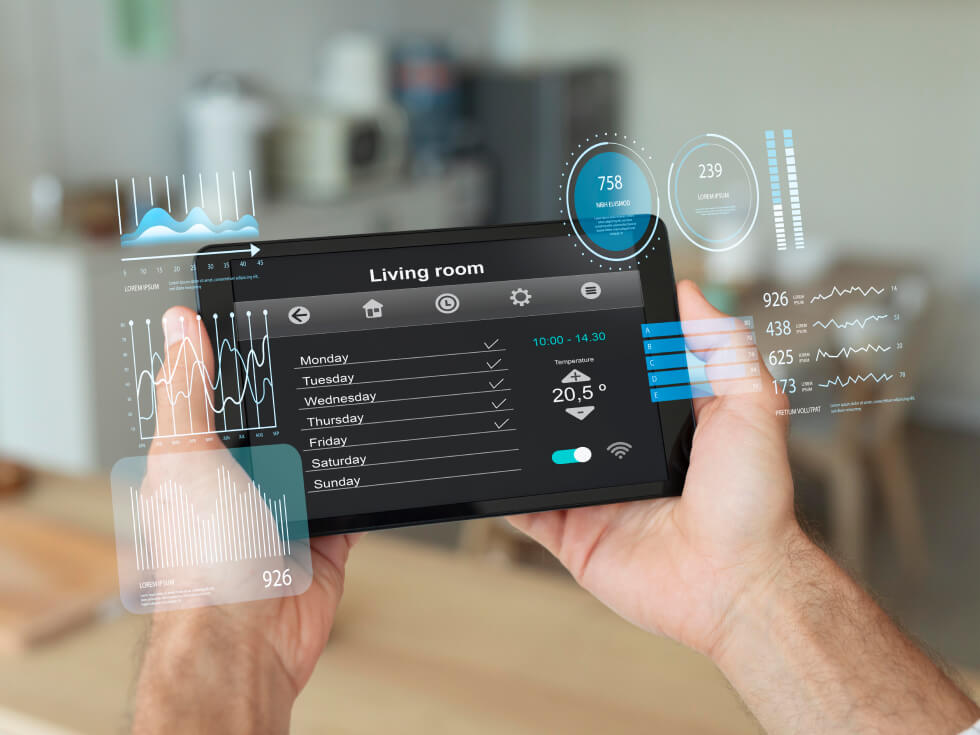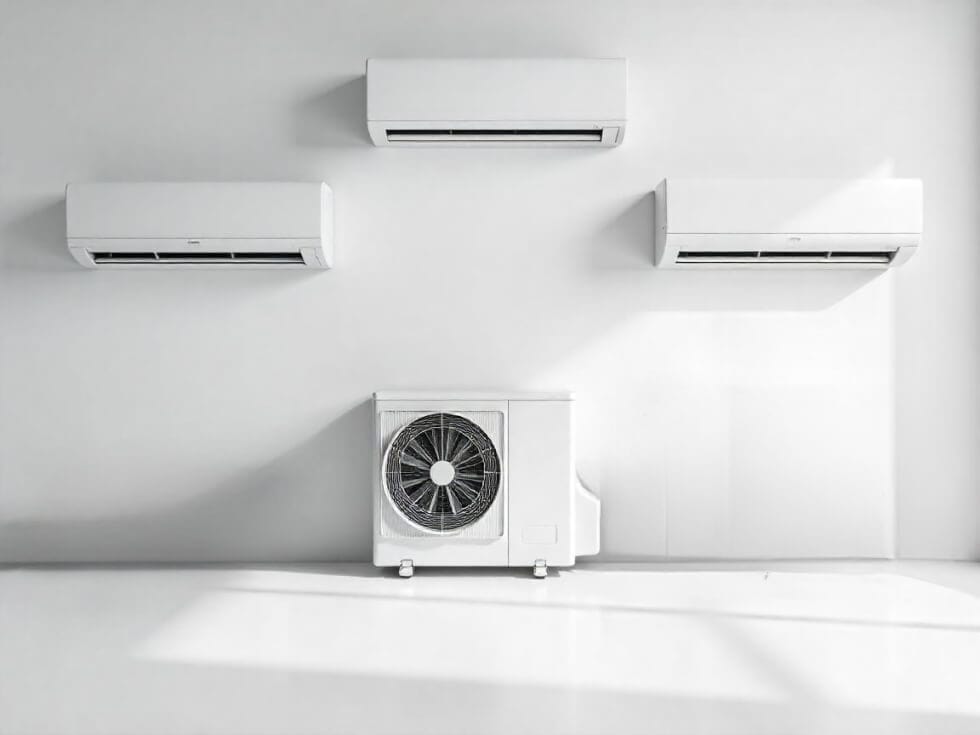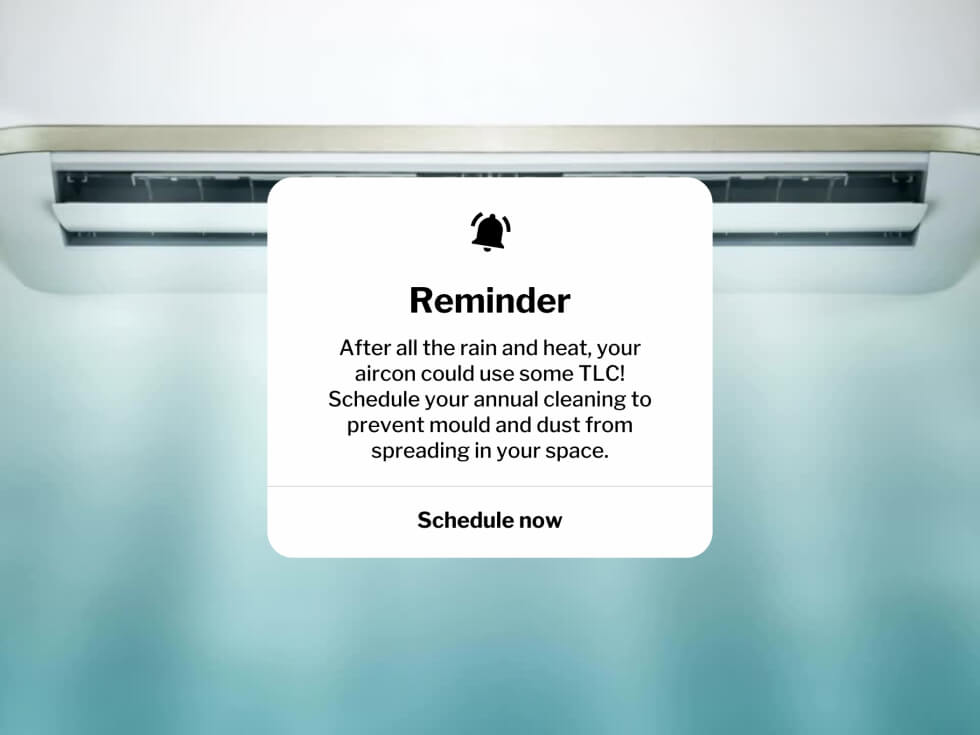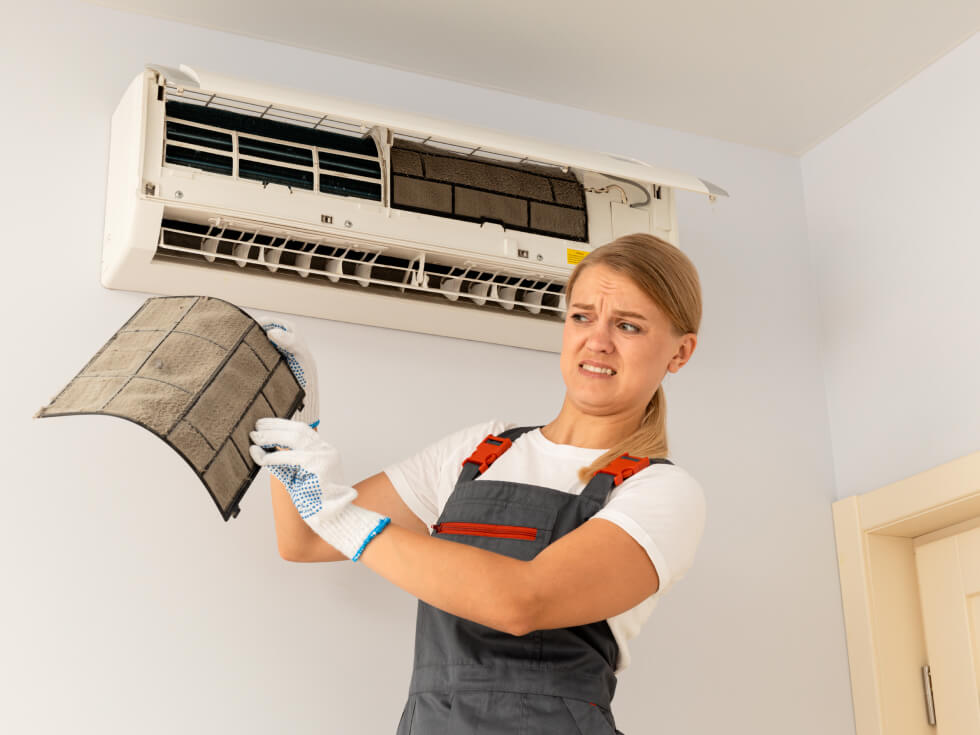Did you know that some Aussie households spend up to 40% of their energy bills on heating and cooling? That’s a hefty chunk of change! But here’s the good news: smart thermostats for air conditioners are changing the game. These clever devices are revolutionising how we manage the temperature of our homes, offering a perfect blend of convenience and energy-efficient comfort.
Smart thermostats are quickly becoming the new norm in Aussie homes. With features like geofencing and smart scheduling, these nifty devices can be programmed according to your habits and controlled with a simple tap on your smartphone, maximising comfort while significantly cutting down on energy use.
Key Takeaways
- Smart thermostats can slash energy bills by optimising AC use
- Remote control via smartphone apps offers unmatched convenience
- Automated temperature control adapts to your daily routines
- Easy installation makes upgrading to smart AC control a breeze
- Integration with existing air cons enhances system efficiency
Understanding Smart Air Conditioning Control
Smart air conditioning control is transforming how we interact with our air conditioning systems, making it easier than ever to maintain the perfect indoor environment while keeping energy costs in check. Let’s explore the ins and outs of this innovative technology and why it’s becoming a popular choice for homeowners across Australia.
What is a smart thermostat for air conditioners?
A smart thermostat for air conditioners is a WiFi-enabled device that connects to your smartphone. It allows you to control your AC unit remotely, offering unprecedented flexibility in climate management. These devices use intelligent climate optimisation to maintain your desired temperature efficiently.
How smart AC control differs from traditional systems
Traditional AC systems rely on limited-range remotes and manual adjustments. In contrast, smart AC control offers:
- Remote climate management from anywhere with internet access
- Automated scheduling based on your preferences
- Real-time temperature and energy usage monitoring
- Integration with other smart home devices
Benefits of upgrading to smart AC technology
Upgrading to smart AC technology brings numerous advantages:
| Benefit | Description |
|---|---|
| Energy Efficiency | Optimise AC usage and energy consumption |
| Cost Savings | Reduce energy waste and electricity bills |
| Convenience | Control your AC from your phone, even when you’re away from home |
| Comfort | Maintain ideal temperatures with precise control and scheduling |
| Environmental Impact | Reduce energy use and your carbon footprint |
With smart AC technology, we can experience the convenience of automated climate control, making our homes more comfortable and reducing energy consumption and costs. The ability to fine-tune our climate control with remote management and intelligent optimisation makes smart thermostats a worthy upgrade for any Australian household.
Types of Smart Thermostats for Air Conditioners
Smart thermostats for air conditioners come in various types, each offering unique features to suit different needs and preferences. Let’s explore the main categories available in the Australian market:
- WiFi Thermostats: These connect to your home network, enabling remote control via smartphone apps.
- Learning Thermostats: These adapt to your routines and preferences over time, adjusting temperatures automatically.
- Voice-Controlled Thermostats: Compatible with smart home integration systems, allowing hands-free operation.
- Touchscreen Thermostats: Feature user-friendly interfaces for easy programming and monitoring.
Many smart thermostats combine multiple features. For instance, a WiFi-enabled device might also offer voice control capabilities, enhancing its functionality within a smart home ecosystem.
External controllers are popular for upgrading existing AC units without replacing the entire system. These devices connect to your current air conditioner, adding smart features like remote access and energy monitoring.
Built-in smart thermostats come pre-installed in newer AC models. They offer seamless integration and often provide more advanced features specific to the air conditioning unit.
| Thermostat Type | Key Features | Best For |
|---|---|---|
| WiFi Thermostat | Remote access, scheduling | Tech-savvy users who want control from anywhere |
| Learning Thermostat | Adaptive programming, energy reports | Busy households seeking effortless efficiency |
| Voice-Controlled Thermostat | Hands-free operation, smart home integration | Users with existing smart home setups |
| Touchscreen Thermostat | Intuitive interface, on-device controls | Those who prefer direct interaction with their AC |
When choosing a smart thermostat, consider your specific needs, budget, and existing home setup. We recommend exploring options that offer smart home integration if you plan to expand your connected devices in the future.
Compatibility and Integration with Existing AC Systems
Before diving into the world of smart thermostats, it’s crucial to ensure your existing AC unit is compatible. Most modern air conditioners work well with smart technology, but it’s wise to double-check. Here’s a quick checklist:
- Check your AC’s voltage (usually 24V for residential systems)
- Identify the type of system (central air, mini-split, etc.)
- Look for a C-wire (common wire) in your current thermostat setup
- Consult your AC manufacturer’s website for compatibility info

Integration with smart home ecosystems
Smart thermostats shine when integrated into broader smart home ecosystems. Popular platforms like Google Home, Amazon Alexa, and Apple HomeKit offer seamless control over your wi-fi-enabled cooling system. Consider which ecosystem you prefer and choose a compatible smart thermostat.
| Ecosystem | Compatible Thermostats | Key Features |
|---|---|---|
| Google Home | Nest, Ecobee, Honeywell | Voice control, scheduling, energy reports |
| Amazon Alexa | Ecobee, Sensi, Emerson | Voice commands, remote access, geofencing |
| Apple HomeKit | Ecobee, Honeywell Lyric | Siri integration, automation, energy tracking |
Considerations for older AC models
If you’re working with an older AC unit, don’t fret. Many smart thermostats offer adapter kits or alternative wiring solutions. Keep these points in mind:
- Some smart thermostats come with power extender kits for systems lacking a C-wire
- Consider professional installation for complex wiring situations
- Older single-stage systems may have limited smart features compared to multi-stage units
- Check for any necessary firmware updates on your AC unit before installation
By carefully considering these factors, you’ll be well-prepared to embrace the benefits of smart home air conditioning, regardless of your current setup.
Features and Functions of Smart AC Thermostats
Smart AC thermostats offer a range of innovative features, going beyond simple temperature adjustment to provide fully automated temperature control and intelligent climate optimisation, ensuring maximum comfort and efficiency.
Let’s explore some key features that make smart AC thermostats stand out:
- Remote Control: Adjust your AC settings from anywhere using your smartphone
- Scheduling: Set custom temperature schedules to match your daily routines
- Energy Monitoring: Track your AC usage and identify ways to reduce energy consumption
- Occupancy Detection: Automatically adjust settings based on whether you’re home or away
- Weather Integration: Adapt to outdoor conditions for optimal indoor comfort
- Learning Capabilities: Some models learn your preferences over time and adjust settings accordingly
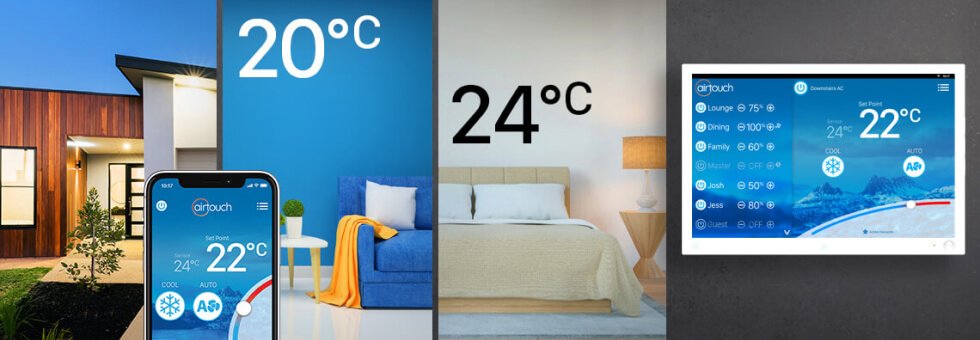
Advanced smart thermostats take automated temperature control to the next level with features like:
- Humidity Sensors: Monitor and adjust indoor humidity levels for optimal comfort
- Geofencing: Use your phone’s location to trigger climate changes as you come and go
- Smart Home Integration: Connect with other devices for comprehensive climate management
To illustrate the difference between basic and advanced smart thermostats, consider this comparison:
| Feature | Basic Smart Thermostat | Advanced Smart Thermostat |
|---|---|---|
| Remote Control | Yes | Yes |
| Scheduling | Yes | Yes |
| Energy Monitoring | Basic | Detailed |
| Learning Capabilities | No | Yes |
| Geofencing | No | Yes |
| Smart Home Integration | Limited | Extensive |
With these features, smart AC thermostats offer unparalleled intelligent climate optimisation. They adapt to your lifestyle, maximise energy efficiency, and provide a level of comfort that traditional thermostats simply can’t match. Not to mention potentially lowering your servicing and AC repair costs by running your units in a more efficient way.
Installation Process for Smart Thermostats
Upgrading to a smart thermostat can be an exciting DIY project for many homeowners.
Follow these steps for a successful DIY thermostat upgrade:
- Turn off power to your HVAC system at the circuit breaker
- Remove the old thermostat cover and take a photo of the wiring
- Disconnect and label the wires
- Remove the old thermostat base
- Install the new smart thermostat base
- Connect the labelled wires to the corresponding terminals
- Attach the new thermostat faceplate
- Restore power and follow the setup instructions
Common installation challenges and solutions
During smart thermostat installation, you might face some hurdles. Here are a few common issues and their solutions:
- Incompatible wiring: Check compatibility before purchasing
- No C-wire: Use a power extender kit or hire a professional
- Incorrect wire connections: Double-check your wiring diagram
- Wi-Fi connectivity issues: Ensure your router is within range
When to seek professional installation assistance
While many homeowners can handle a DIY thermostat upgrade, some situations call for expert help. Always remember that attempting electrical installations yourself can be risky and potentially dangerous, so it’s best to consult a professional if you face:
| Scenario | Reason for Professional Help |
|---|---|
| Complex HVAC systems | Multiple zones or unique setups require expertise |
| Lack of C-wire | New wiring may need to be run |
| Electrical concerns | Safety issues or outdated wiring |
| Limited DIY experience | Avoid costly or dangerous mistakes |
Smart AC Controller Apps
With remote management capabilities, smart AC controller apps offer unprecedented control over our air conditioning systems and have completely changed the way we manage our home climate.
Gone are the days of coming home to a stuffy house or worrying about forgotten air conditioners running all day. Smart AC controllers allow us to adjust our home’s temperature from anywhere with an internet connection. This means we can cool or heat our homes before we arrive, ensuring comfort from the moment we step through the door.

Key features of remote climate management include:
- Temperature adjustments on the go
- Scheduling options for automatic control
- Real-time energy usage monitoring
- Geofencing for location-based automation
Smart AC control apps offer a user-friendly interface to manage these features. We can create custom schedules that align with our daily routines, optimising both comfort and energy efficiency. For example, we might set the AC to turn on 30 minutes before we wake up and switch off when we leave for work.
Energy tracking is another valuable aspect of remote climate management. These apps provide insights into our AC usage patterns, helping us make informed decisions about our energy consumption. By identifying peak usage times and adjusting our habits accordingly, we can significantly reduce our energy bills.
| Feature | Benefit |
|---|---|
| Remote access | Control AC from anywhere |
| Scheduling | Automate cooling for efficiency |
| Energy monitoring | Track and reduce power usage |
| Smart home integration | Sync with other devices for seamless control |
How Smart Thermostats Optimise Energy Usage
Smart thermostats use advanced technology to optimise energy usage in your home. They learn your preferences and routines, automatically adjusting temperature settings to ensure comfort while minimising unnecessary energy consumption. By integrating with weather forecasts and occupancy sensors, these devices create a personalised cooling schedule that adapts to your lifestyle.
Environmental Benefits of Smart AC Control
By optimising energy usage, smart thermostats contribute to a reduction in overall energy consumption. This translates to lower greenhouse gas emissions and a smaller carbon footprint for your household. The environmental benefits of smart AC control include:
- Reduced energy waste through precise temperature control
- Decreased demand on power grids during peak hours
- Lower carbon emissions from more efficient cooling/heating practices
- Promotion of sustainable living through smart energy management
Smart thermostats are an excellent investment for those looking to combine energy-efficient temperature control with cost savings and environmental responsibility. By embracing this technology, we can create more sustainable homes while enjoying the benefits of modern comfort.
Smart Thermostat for Air Conditioner: Top Brands and Models
The smart thermostat market offers a range of options from leading brands. Let’s take a look at some top contenders:
- Nest: Known for its learning capabilities and sleek design
- ecobee: Offers advanced sensors for improved temperature control
- Honeywell: Provides a wide range of models to suit different needs
- Mysa: Specialises in thermostats for high-voltage heating systems
When choosing among the best smart AC thermostats, consider these key factors:
- Compatibility with your existing AC unit
- Integration with your smart home ecosystem
- Features offered, such as geofencing or voice control
- Warranty coverage and customer support
It’s worth noting that some smart thermostats are designed for specific AC types. For example, certain models work best with mini-split or window units. Be sure to check compatibility before making your purchase.
| Brand | Standout Feature | Best For |
|---|---|---|
| Nest | Self-learning capabilities | Tech-savvy users |
| ecobee | Room sensors for improved accuracy | Large homes with temperature variations |
| Honeywell | Wide range of models | Users seeking specific features |
| Mysa | High-voltage system compatibility | Homes with electric baseboard heating |
Making the Switch to Smart AC Control: Is It Right for You?
Still wondering if a smart AC system is the right choice for your home? So, let’s recap:
Smart AC benefits include energy savings, better comfort, and easy remote control. These perks make an aircon upgrade tempting for many Aussie homeowners.
But before you jump in, think about your current setup. Is your AC compatible with smart controllers? What’s your budget like? Do you want full smart home integration? These questions will help you decide if it’s the right move for you.
While there’s an upfront cost, many find the long-term savings worth it. Smart ACs can cut power bills and boost comfort. Plus, you can control your cooling from anywhere – perfect for our hot summers.
We reckon it’s worth weighing up the smart AC benefits against your needs. For most, the convenience and savings make the switch a no-brainer.
If you are ready to upgrade your air conditioning system on the Sunshine Coast or still have questions, feel free to give us a call. Our team will be happy to assist you with any queries you may have.

